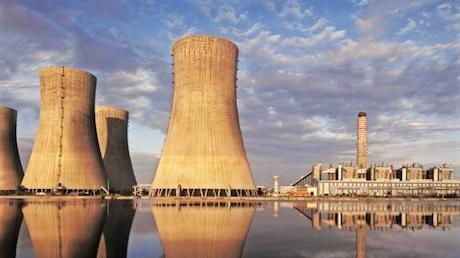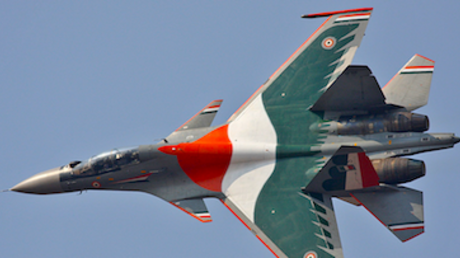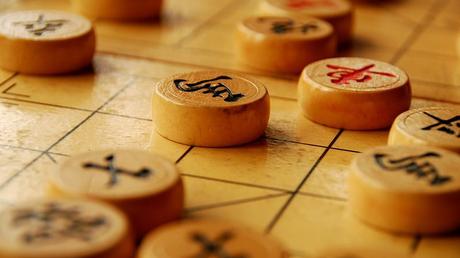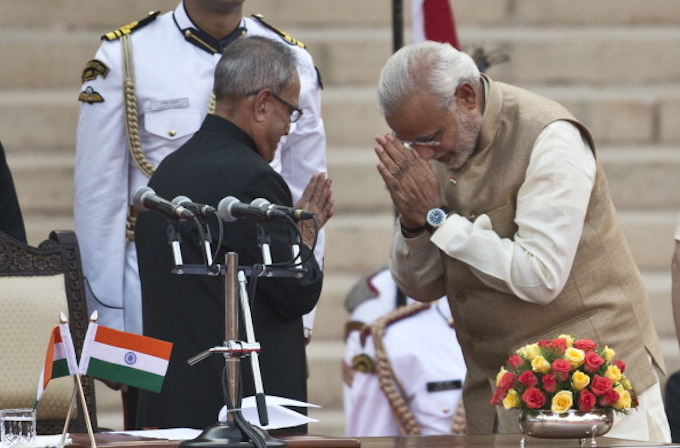“I, Narendra Damodardas Modi, do swear in the name of God that I will bear true faith and allegiance to the Constitution of India as by law established….”
So declared India's 15th Prime Minister as President Pranab Mukherjee administered the oath of office at a grand, open air ceremony in the forecourt of the majestic Rashtrapati Bhawan (President’s House) in New Delhi yesterday, 26 May.
The man who as a youth made his living selling tea on railway platforms took his oath before 3000 witnesses and guests, among them leaders from SAARC (South Asian Association for Regional Cooperation) – Pakistan’s Prime Minister Nawaz Sharif, Sri Lankan President Mahinda Rajapaksa, Afghanistan’s President Hamid Karzai and leaders from Nepal, Bhutan, Bangladesh, Maldives and Mauritius.
Modi’s decision to invite regional leaders to the inauguration ceremony has been a talking point in the country, as it is unprecedented. Foreign policy experts have welcomed the move, saying that this gesture will set the scene for good bilateral relations in an infamously tense and sometimes volatile neighbourhood. As a goodwill gesture in return, Pakistan and Srilanka have both released Indian fishermen from their custody.
Sharif told journalists on his arrival that he was carrying a ‘message of peace’.
Also present at the swearing-in ceremony were a host of national leaders, among them outgoing Prime Minister Manmohan Singh, Congress Party president Sonia Gandhi and her son, the party’s vice president – and Modi’s humiliated rival in the recent elections - Rahul Gandhi.
Back in his hometown of Gandhinagar in Gujarat, Modi’s family and his proudly tearful mother watched the swearing-in ceremony on television. At 95, Hiraba chose to stay at home instead of travelling to Delhi. The family celebrated in the traditional Indian way, with sweets and fireworks, closely watched by media.
But the focus of the official festivities was on the Pakistani Prime Minister, who arrived on Monday morning for the ceremony. Pakistan and India have fought three wars since partition in 1947. Sharif told journalists on his arrival that he was carrying a ‘message of peace’, and that he intends to pick up with India’s new Prime Minister where he and then Prime Minister Atal Bihari Vajpayee left off in 1999. (Then Vajpayee rode a bus to the Pakistani city of Lahore to sign an accord with Sharif, but three months later the neighbours nearly went to war over Kashmir.) Sharif was scheduled to meet Modi this morning, and it was expected the two countries would discuss measures to strengthen and enhance cooperation.
The President of India – Pranab Mukherjee - hosted a lavish dinner for all the SAARC leaders. The menu, painstakingly prepared according to flavour and diplomacy to showcase the range of Indian regional flavours, was overseen by the Ministry of External Affairs. It featured Gujarati kela-methi nu shaak (banana fenugreek casserole); alongside Bengali potol dorma (a bitter gourd cottage cheese vegetable dish), Punjabi dal makhani (black butter daal) and Tamil Nadu’s chicken chettinad (chicken in signature south Indian sauce), followed up by mango shrikhand (mousse), sandesh (a Bengali sweet dish) and fruits.
While the guests were still digesting their meal, the new administration was getting down to business. The Indian Prime Minister’s new website was launched within minutes of him taking the oath.
The website carried the message: “Together we will script a glorious future for India. Let us together dream of a strong, developed and inclusive India that actively engages with the global community to strengthen the cause of World Peace and development.”
Modi is hoping to achieve this with the leanest leadership team India has seen in the past 15 years, with just 45 ministers as part of the council. Senior leaders Rajnath Singh, Sushma Swaraj and Arun Jaitley have been allotted the most important portfolios in the cabinet. A day before the swearing in ceremony, Indian Prime Minister chose to reveal his template for government on Twitter, issuing this series on Sunday night:
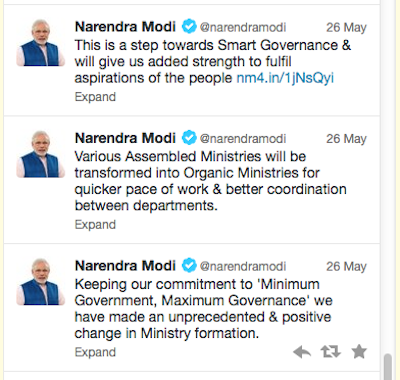
Apart from Modi announcing the moves on Twitter, his office also released a statement on Sunday stating that the PM had "adopted (the) guiding principle of 'minimum government and maximum governance' and also rationalization with a commitment to bring a change in the work culture and style of governance.
"The focus is on convergence in the activities of various ministries where one Cabinet minister will be heading a cluster of ministries who are working in complimentary sectors. Mr Modi is eventually aiming at Smart Governance where the top layers of Government will be downsized and there would be expansion at the grass root level."
Now that the pomp and ceremony of government formation are over, all eyes are now on how quickly Narendra Modi moves to deliver on the promises he has made to his billion-strong nation.



